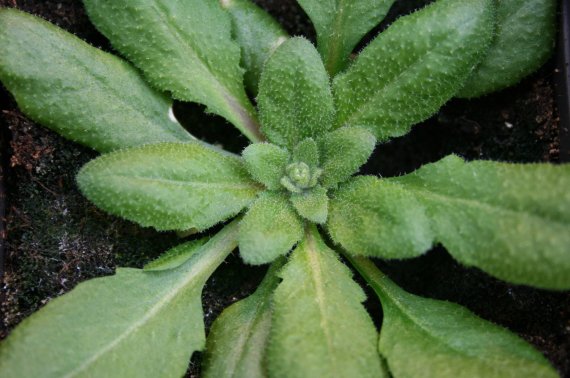Some Arabidopsis thaliana plants recover from sudden exposure to bright light faster than others. © WikimediaScientists have been working continuously on improving crop yields, but have only recently started targeting photosynthesis . ‘Breeding for photosynthesis is tricky,’ says endowed professor Mark Aarts (Genetics of Plant Adaptation). He thinks this is because it is difficult to measure the impact of natural variation in photosynthesis on growth. Moreover, for a long time scientists believed that nature itself had optimized photosynthesis, and that it could not be improved upon.
But that is a misunderstanding, shows research by Aarts and his colleagues. They grew Arabidopsis thaliana in very low light conditions and then exposed the plants to light that was five times stronger. Initially this halved the efficiency of the photosynthesis. The plant protected itself against so much light, but recovered again after a few days.
Recovery
The speed of that recovery varies. Some Arabidopsis plants recover much faster than others. That variation can be traced to genetic differences. Aarts’s group, with Roxanne van Rooijen as first author, managed to identify one gene – Yellow Seedling 1 (YS1) – that plays a key role in that recovery. Some variants of the gene promote fast recovery. So Aarts concluded that it is possible to breed plants for more efficient photosynthesis. And no genetic modification is required: classic plant breeding suffices.
Some Arabidopsis plants recover much faster than others, this leads to an advantage.
Mark Aarts
This is not to say that YS1 is the miracle gene that will lead to better crops. Aarts ‘In itself, this gene is not the most interesting thing about our research. There are at least 30 different genes in Arabidopsis that are involved in the adaptation of photosynthesis. Now we have zoomed in on this one gene.’
The Wageningen researchers also figured out how the YS1 gene influences photosynthesis. Light influences the expression of the gene, which codes for a protein that is active in the chloroplasts – the compartments of plants’ cells responsible for photosynthesis. In plants with the most useful form of the YS1 gene, that expression is much less dependent on changes in light intensity than in plants with the least favourable form. These plants therefore recover faster from a change in light intensity.


